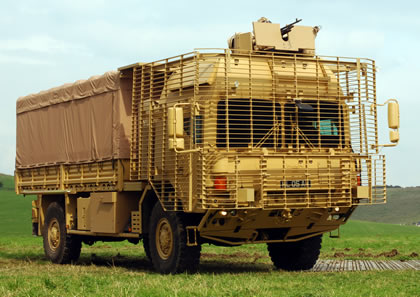 During the Urgent Operational Requirement (UOR) Equipment Demonstration held in the UK last month, the Ministry of Defense displayed some of the latest types of equipment being use by the British Army on operations in Iraq and Afghanistan. Baroness Taylor, Minister for Defence Equipment and Support said that the Urgent Operational Requirements (UOR) process proved itself as an undisputed success – over £3Bn of extra money has been spent on new equipment for operations in Iraq and Afghanistan. New equipment fielded under UOR range from better personal gear and weapons, to new armored vehicles, like the Mastiff and Ridgback and sophisticated sensors protecting forward operating bases.
During the Urgent Operational Requirement (UOR) Equipment Demonstration held in the UK last month, the Ministry of Defense displayed some of the latest types of equipment being use by the British Army on operations in Iraq and Afghanistan. Baroness Taylor, Minister for Defence Equipment and Support said that the Urgent Operational Requirements (UOR) process proved itself as an undisputed success – over £3Bn of extra money has been spent on new equipment for operations in Iraq and Afghanistan. New equipment fielded under UOR range from better personal gear and weapons, to new armored vehicles, like the Mastiff and Ridgback and sophisticated sensors protecting forward operating bases. 
Home Land Systems Armored vehicles Rapid Acquisition & Deployment of Armor, Sensors & Firepower Improve Combat Effectiveness...



















